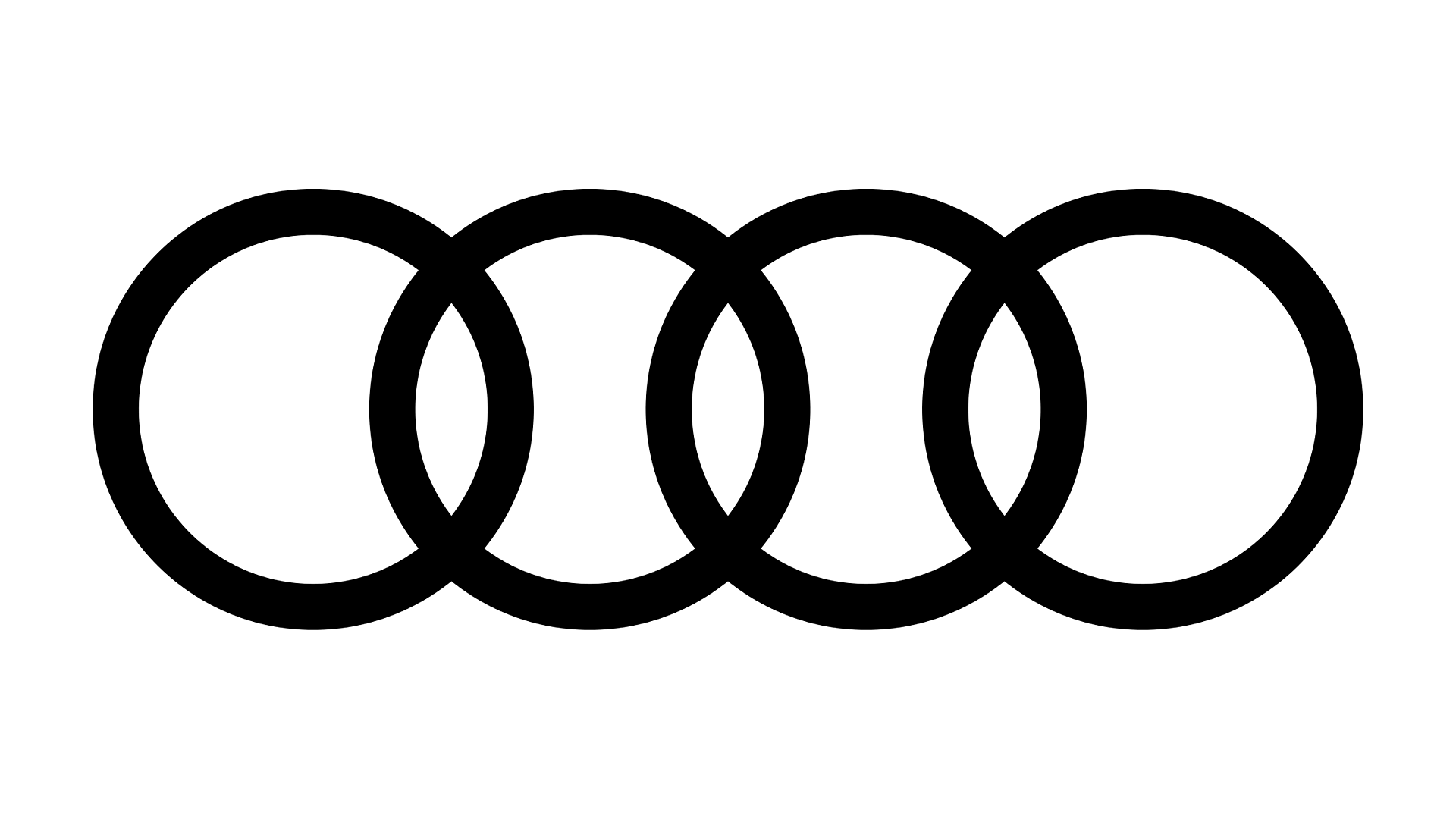
In the intricate dance of light and shadow, reflections have captivated the human imagination, serving as a metaphor for introspection, duality, and the underlying truth that lies beneath the surface. The art of incorporating reflections into logo design transcends mere aesthetics, embedding a layer of sophistication and depth that invites viewers to look closer. The most famous logos with reflections are not just trademarks; they are puzzles, revealing more than they conceal and engaging the mind in a silent conversation about identity and perception. As we delve into the top 40+ most famous logos that harness the power of reflections, we embark on a visual journey that explores the essence of branding through the looking glass of creativity and innovation.
Interesting Fact:
The concept of using reflections in design can be traced back to ancient times, where water and mirrors were believed to be portals to other worlds. This mystical quality of reflections has been harnessed in modern logo design to evoke a sense of wonder and exploration.
Key Highlights of Reflective Logo Design:
- Symmetry and Balance: Reflections create a sense of harmony and balance, appealing to our innate love for symmetry.
- Innovation and Creativity: Utilizing reflections in logos signals a brand’s commitment to thinking outside the box and embracing creativity.
- Depth and Dimension: Reflections add a layer of depth and dimension, transforming a flat image into a dynamic visual experience.
- Memorability: Logos with reflections stand out, their unique visual twist making them more memorable to the audience.
- Versatility: Reflective elements can be adapted across various media, from digital interfaces to physical merchandise, maintaining their allure.
“Reflections in design are not just visual tricks; they are windows to the soul of a brand, offering a glimpse into the depth and complexity that lies beneath the surface.” – A celebrated graphic designer.
As we explore the logos that masterfully employ reflections, we uncover the strategic brilliance behind these captivating visuals. From iconic brands that have become household names to emerging startups that are making their mark, these logos with reflections stand as testaments to the power of thoughtful design in carving a distinct identity in the crowded marketplace.
Fendi

Fendi, an Italian luxury fashion house, was established in 1925 in Rome by Adele and Edoardo Fendi. The brand is renowned for its fur, ready-to-wear, leather goods, shoes, fragrances, eyewear, timepieces, and accessories. Fendi’s logo, known as the “double F” or “Zucca” monogram, showcases two capital ‘F’s facing each other, creating a mirror image that is symmetrical along the vertical axis. This iconic design represents elegance, craftsmanship, and innovation, embodying the essence of the luxury brand.
AOA

AOA, or Ace of Angels, is a South Korean girl group formed by FNC Entertainment. The AOA logo consists of the initials “AOA” where the letters are stylized to reflect both modernity and elegance. The logo is designed to be symmetrical, with the ‘A’s on either side mirroring each other around the central ‘O’, which creates a balanced and harmonious look, embodying the group’s unity and artistic identity.
Red Bull

Red Bull is an Austrian energy drink company known worldwide for its caffeine-rich beverages designed to boost energy and mental performance. The Red Bull logo features two red bulls charging at each other against a yellow sun backdrop. The logo is symmetrical, with each bull being an exact mirror of the other, symbolizing power, energy, and dynamism. This symmetry along the vertical axis emphasizes the brand’s message of vitality and endurance.
DSWD (Department of Social Welfare and Development)

The Department of Social Welfare and Development (DSWD) is the Philippine government’s arm responsible for the protection of social welfare rights and promotion of social development. Its initiatives are aimed at empowering and assisting the underprivileged sectors of society. The DSWD logo features a human figure cradled within a caring hand, symbolizing the organization’s commitment to nurturing and protecting those in need. The logo is symmetric, with each side mirroring the other, representing balance and equality in the delivery of social services.
Umbrella Corporation

The Umbrella Corporation is a fictional biotechnology and pharmaceutical company in the Resident Evil series, notorious for its unethical experiments and the creation of bioweapons. Its logo features a red and white umbrella covering the globe, symbolizing the company’s omnipresent influence and its shield against the consequences of its actions. The design is perfectly symmetrical, emphasizing the corporation’s facade of balance and protection amidst its chaotic and destructive nature.
SCP Foundation

The SCP Foundation is a fictional organization documented in a web-based collaborative writing project. It is tasked with securing, containing, and protecting anomalous objects, entities, and phenomena. The SCP logo features three arrows pointing inward towards a circle, symbolizing containment and protection against external threats. The logo’s design is symmetrical, underscoring the Foundation’s commitment to balance and the equal importance of its core principles.
Hilton Garden Inn

Hilton Garden Inn is a brand of mid-priced, focused-service hotels owned by Hilton Worldwide. It caters to business travelers and tourists seeking comfortable accommodations. The Hilton Garden Inn logo features a stylized representation of a hibiscus flower, symbolizing the brand’s commitment to providing a welcoming and refreshing experience for guests. The logo is symmetrical, highlighting the brand’s focus on consistency and quality in guest services across all locations.
UPSA

UPSA is a pharmaceutical company known for its focus on developing and manufacturing a wide range of healthcare products, including over-the-counter medications and supplements. The logo of UPSA is designed to reflect the brand’s commitment to healthcare and innovation, featuring a simple yet effective use of symmetry, with identical halves if divided down the middle. The design likely incorporates elements that symbolize care, health, and science, using a color scheme that conveys trust and reliability.
Honda

Honda is renowned globally for its innovation in automobiles, motorcycles, and power equipment. The Honda logo is simple yet iconic, featuring the uppercase letter “H” in a bold and stylized font. The logo is perfectly symmetrical, emphasizing Honda’s commitment to precision, reliability, and balance in engineering. This symmetry can also be seen as a reflection of the brand’s dedication to harmony between technology and human life.
4H

4H is an organization dedicated to empowering youth to reach their full potential through a hands-on learning approach in areas like agriculture, science, and citizenship. Its logo typically features a four-leaf clover, with each leaf representing one aspect of the 4-H pledge: head, heart, hands, and health. The logo is designed to be symmetrical, symbolizing the balance and comprehensive development approach 4H aims to provide for young individuals. This symmetry reinforces the interconnectedness of the four core values in nurturing well-rounded personalities.
ABBA

ABBA, the legendary Swedish pop group, is known for its catchy tunes and significant impact on the music industry. Their logo is famously designed with the first “B” inverted, creating a mirror image that makes the logo symmetrical. This unique design choice not only makes the logo memorable but also reflects the harmony and unity within the band, with the symmetry symbolizing their cohesive sound and the equal contribution of each member to the group’s success.
Roxy

Roxy is a lifestyle brand that specializes in clothing, accessories, and related products for women, particularly in the surf and snowboarding sectors. It is the female counterpart to the Quiksilver brand. The Roxy logo consists of two Quiksilver logos mirrored to form a heart shape, symbolizing the brand’s focus on women’s sports and fashion. The logo is symmetrically balanced, embodying the harmony and dynamic spirit of Roxy’s target audience.
Deadpool

Deadpool is a fictional character appearing in American comic books published by Marvel Comics, known for his eccentric personality and regenerative healing factor. The Deadpool logo features a stylized skull with two crossed swords behind it, designed in a way that the logo is symmetrical. This symmetry underscores the character’s unpredictable nature and balance between chaos and humor.
Under Armour

Under Armour is an American company that manufactures footwear, sports, and casual apparel. It is known for innovative performance gear designed to keep athletes cool, dry, and light throughout the course of a game, practice, or workout. The Under Armour logo consists of the letters “U” and “A” combined in such a way that they form a symmetrical emblem, reflecting the brand’s commitment to balance in performance and innovation.
Dacia

Dacia, a Romanian car manufacturer, has seen significant growth and transformation over the years, becoming known for its affordable and reliable vehicles. In the previous year, Dacia introduced a new, simplified, and symmetric logo, marking a fresh era in its brand identity. The logo is characterized by its modern and minimalist design, consisting of stylized letters that form a distinctive, geometric pattern. This new emblem is perfectly symmetrical, meaning it looks the same on either side if divided down the middle, showcasing Dacia’s commitment to simplicity and efficiency.
Chanel

Chanel is a high-end French fashion house known for its luxury goods, timeless style, and the revolutionary vision of its founder, Coco Chanel. The Chanel logo is an epitome of elegance and simplicity, consisting of two interlocking ‘C’s that stand for the founder’s initials. This emblem is symmetrical, with both sides mirroring each other perfectly if divided down the middle, reflecting the brand’s balance between classic allure and modern sophistication.
Airbnb

Airbnb, an online marketplace for lodging and tourism experiences, has revolutionized the way people travel and experience new destinations. The Airbnb logo, known as the “Bélo,” symbolizes belonging, with a design that combines elements of a heart, a location pin, and people with raised arms. The logo is symmetric, illustrating the company’s mission to create a world where everyone can feel at home, anywhere. The symmetry ensures that the logo maintains its sense of balance and welcome from any perspective.
Motorola

Motorola, a pioneer in the mobile communication industry, has a long history of innovation and quality in its products. The Motorola logo features the iconic “M” batwing emblem, which is both simple and memorable. This logo is symmetrically designed, with the “M” appearing identical on both sides if the logo is divided down the middle. This symmetry represents Motorola’s balance between technological advancement and timeless design.
Audi

Audi, a leading German automobile manufacturer, is renowned for its engineering excellence, luxury vehicles, and advanced technology. The Audi logo consists of four interlocked rings, symbolizing the union of four independent car companies that came together to form Audi’s predecessor company. The logo is symmetric, with each ring perfectly mirroring its counterpart on the opposite side if divided down the middle, signifying unity, strength, and the brand’s cohesive vision for innovation.
Mitsubishi

Mitsubishi, a multinational conglomerate known for its diverse range of products including automobiles, has a logo that is rich in symbolism and history. The Mitsubishi logo consists of three diamond shapes arranged in a triangular formation, representing reliability, success, and well-being. This emblem is symmetric, ensuring that it appears the same on both sides if split down the middle, symbolizing the company’s commitment to balance, precision, and forward-thinking in all its endeavors.
Gucci

Founded in Florence, Italy, by Guccio Gucci in 1921, Gucci stands as a pinnacle of luxury and craftsmanship in the fashion industry. It’s renowned for its innovative yet timeless designs in leather goods, apparel, and accessories. The Gucci logo, with its distinctive double ‘G’ monogram, symbolizes not only the founder’s initials but also the melding of tradition and modern elegance. The interlocking ‘G’s create a mirror image, each side reflecting the other’s opulence and attention to detail, encapsulating the brand’s commitment to quality and style.
McDonald’s

As a cornerstone of the fast-food industry, McDonald’s has been serving billions across the globe since its inception by Richard and Maurice McDonald in 1940, with Ray Kroc later transforming it into the franchise giant we know today. Its logo, the “Golden Arches,” represents more than just the letter ‘M’; it’s an emblem of familiarity and comfort. The mirrored halves of the arches not only provide symmetry but also signify the brand’s promise of consistent, reliable service and the universally welcoming experience McDonald’s aims to offer.
Decepticon
![]()
The Decepticons, formidable adversaries of the Autobots in the Transformers universe, symbolize power, ambition, and resilience. Their logo, a stark, symmetrical depiction of a Decepticon face, conveys menace and strength. The precision in its bilateral symmetry underscores the unity and order within their ranks, despite their chaotic goals. This emblem captures the essence of the Decepticons: a formidable force, organized and efficient in its quest for dominance.
Volkswagen

Volkswagen, whose name translates to “the people’s car,” was founded with the vision of creating accessible and reliable vehicles for the masses. Its logo, comprising a V over a W within a circle, is a testament to this vision, blending simplicity with elegance. The emblem’s symmetry reflects Volkswagen’s dedication to precision engineering and its democratic ethos, promising quality and innovation in every car.
CBC

The Canadian Broadcasting Corporation, Canada’s cultural ambassador since 1936, plays a crucial role in uniting a diverse country through its programming. The logo’s abstract design, featuring geometric shapes, suggests an eye or a lens, focusing on the CBC’s role in providing a perspective on the world. Its symmetrical arrangement underscores the broadcaster’s objective to offer balanced, impartial content, reflecting a wide array of voices and stories from across Canada and beyond.
Starbucks

Starbucks, from its beginnings in Seattle’s historic Pike Place Market in 1971, has grown into a global coffee empire, synonymous with the coffee culture of the Pacific Northwest. The siren logo, inspired by maritime folklore, is enchanting with its symmetry, drawing customers into a world of mystique and brewed perfection. The twin-tailed mermaid beckons coffee lovers alike, symbolizing the allure of the high seas and the adventurous spirit of Starbucks, inviting patrons to explore the rich traditions and diverse tastes of coffee.
Conclusion
As our exploration of the world’s most famous logos with reflections comes to a close, we are left with a profound appreciation for the artistry and ingenuity that define this unique design element. These logos, more than mere symbols or trademarks, serve as beacons of creativity and innovation in the vast ocean of branding. They invite onlookers to pause, reflect, and discover the deeper meanings and stories that are ingenely mirrored within their designs. Through the lens of these reflective masterpieces, we gain insight into the myriad ways in which brands can connect with their audience, not just visually but emotionally and intellectually.
Expanded Insights on Reflective Logo Design:
- A Mirror to Brand Values: Logos with reflections often mirror the core values and ethos of the brands they represent, offering a clever visual metaphor for transparency, integrity, and depth.
- Engagement Through Intrigue: These logos engage consumers by invoking intrigue and curiosity, encouraging a deeper engagement with the brand through the visual puzzle presented.
- Evolution of Brand Identity: Reflective logos often evolve with the brand, their adaptable nature allowing for reinterpretation and reinvention that keeps the brand relevant and resonant with its audience.
- Psychological Appeal: The psychological impact of symmetry and reflection in logos taps into our subconscious, drawing us towards these brands with an almost magnetic pull.
- Cultural and Historical Resonance: Reflective elements in logos can also echo cultural, historical, and even mystical themes, enriching the brand narrative and connecting with audiences on a more profound level.
Studies in psychology suggest that humans are naturally attracted to symmetrical and reflective designs, viewing them as more beautiful. This innate preference has been skillfully leveraged in logo design to enhance brand attractiveness and memorability.
In concluding, the top 40+ most famous logos with reflections are not merely examples of exceptional design; they are lessons in visual storytelling, brand building, and the endless pursuit of innovation. As we move forward, the reflective technique in logo design will undoubtedly continue to inspire and challenge designers to think deeper about the interaction between brand and consumer, image and identity, surface and depth. These logos stand as a testament to the power of design to reflect not just the essence of a brand, but also the dreams and aspirations of our collective human experience.










Leave a comment